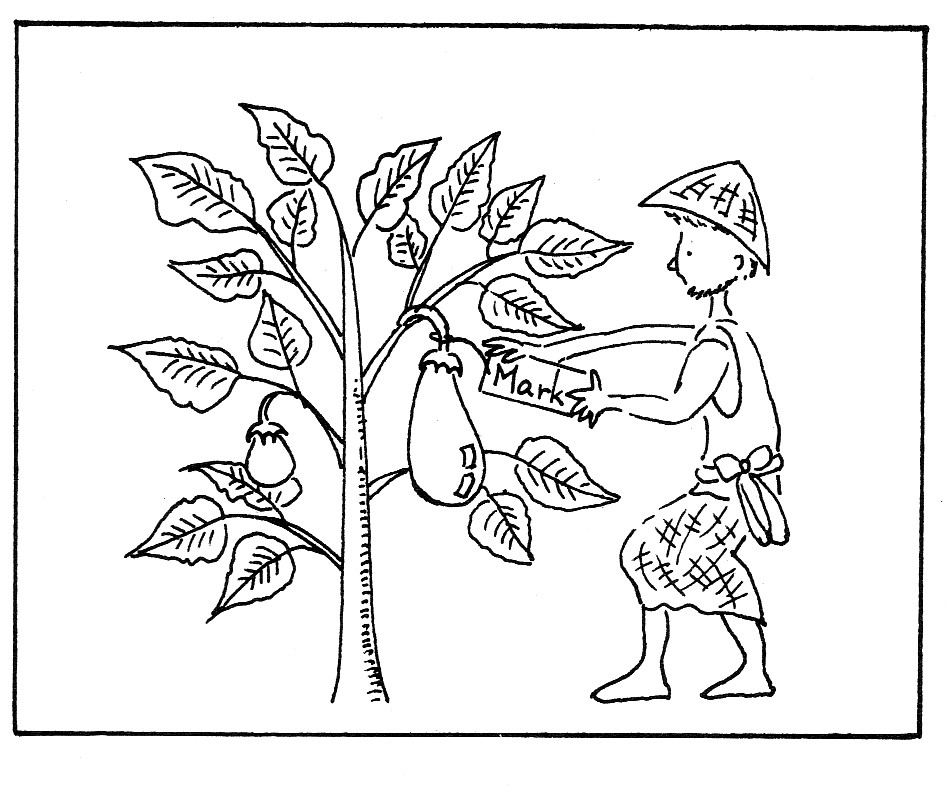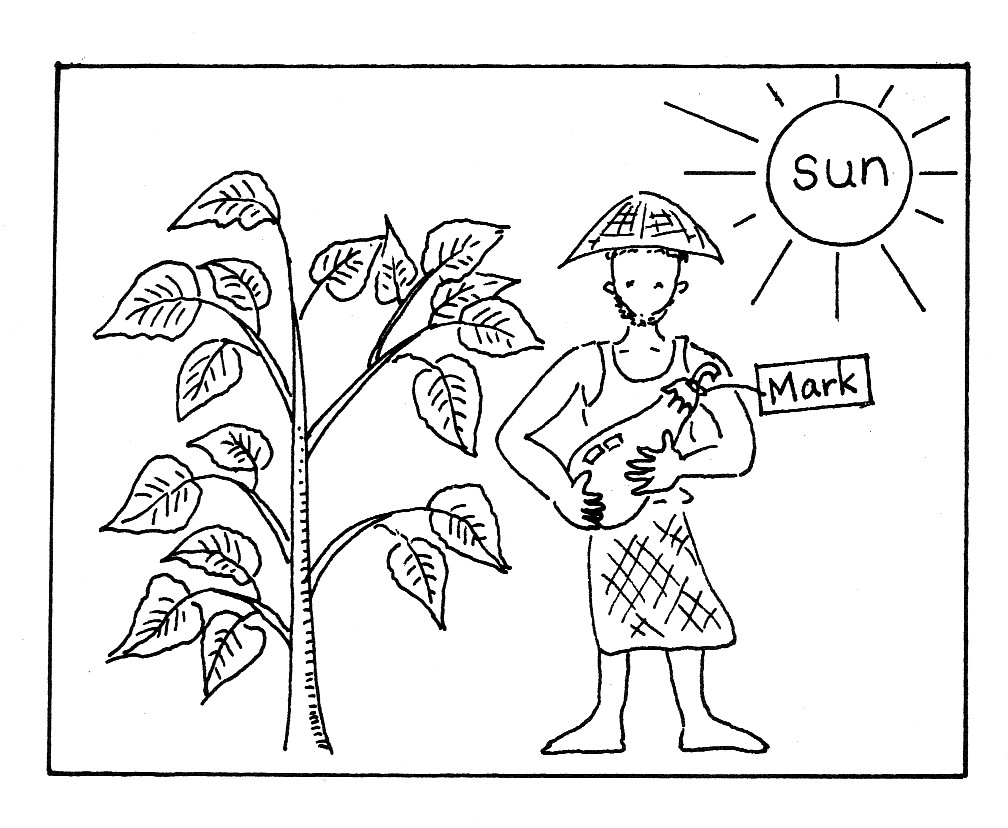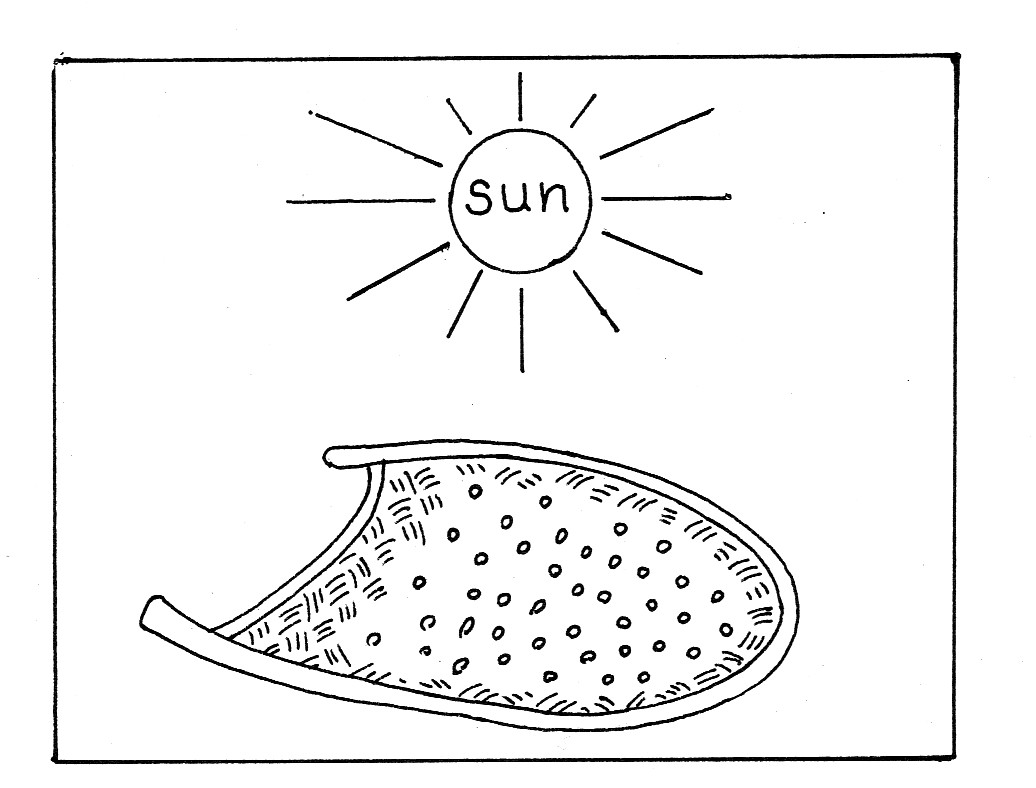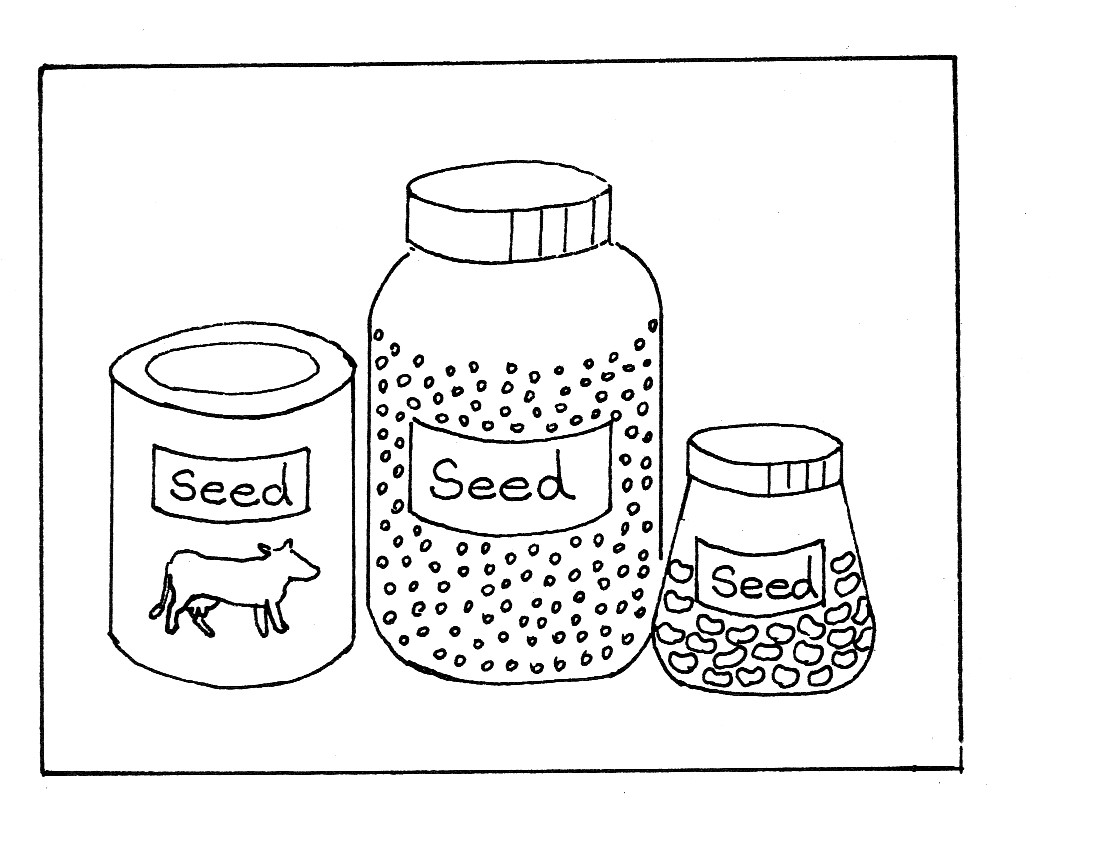8.3 The Process of Self Seed Production
To carry out self seed production, learning the basics of how to process the seeds is necessary. Below, the process of self seed production is described from plant selection to storage and documentation.
Stage 1: Plant Selection and Marking
Identifying the plants from which the seeds will be collected and making an identification mark on them are the first tasks. The marking is very important to save the plants from being harvested by mistake. Steps for choosing plants are:
1. healthy plants (no pest attack, healthy location)
2. good yielding plants (good in size, shape, color etc.)
3. good taste
Stage 2: Collection of Seeds
When the identified plants become mature, it is time to collect. Important steps are:
1. identify the right time (mature enough)
2. collect the seeds on a fine day (avoid rainy days)
Stage 3: Drying Seeds
The seeds collected must be dried as soon as possible. Some seeds (tomato, papaya, etc.) need to be washed first. The drying process is the deciding point as to whether or not good quality and disease free seeds will result.
Steps;
1. dry the seeds by sunlight, not by heater
2. dry the seeds sufficiently
Stage 4: Cleaning and Treatment
After drying the seeds sufficiently, cleaning and treatment of the seeds are necessary. The steps in this process are:
1. remove waste and bad seeds, and select the fine seeds only
2. treat seeds by mixing with materials against insect attack
The material for treatment include:
1. dry ash
2. dry neem leaves
3. other locally adapted leaves
4. others
Stage 5: Storage
After treatment, the seeds should be kept under clean, dry, dark and low temperature conditions as soon as possible.
1. use a bottle or air tight container
2. put seeds with drying materials such as roasted rice dry ash, etc.
3. keep the bottles and containers in a dry, dark cool place
Stage 6: Documentation and Labeling
Documentation (recording the details about the seeds) and labeling (putting names on bottles and containers) is very important for identification in the next season and retaining the details of the seeds for future reference.
The label should include the record number, name and date of collection.
In addition, the following information should be recorded on a form:
1. record number
2. plant name (local and English/botanical)
3. variety name
4. collection date
5. place of collection
6. name of collector
7. remarks (description of the character of seeds)
For a farmer, only labeling may be enough. But for an organization and a community seed bank, keeping documentation is a must.
|




